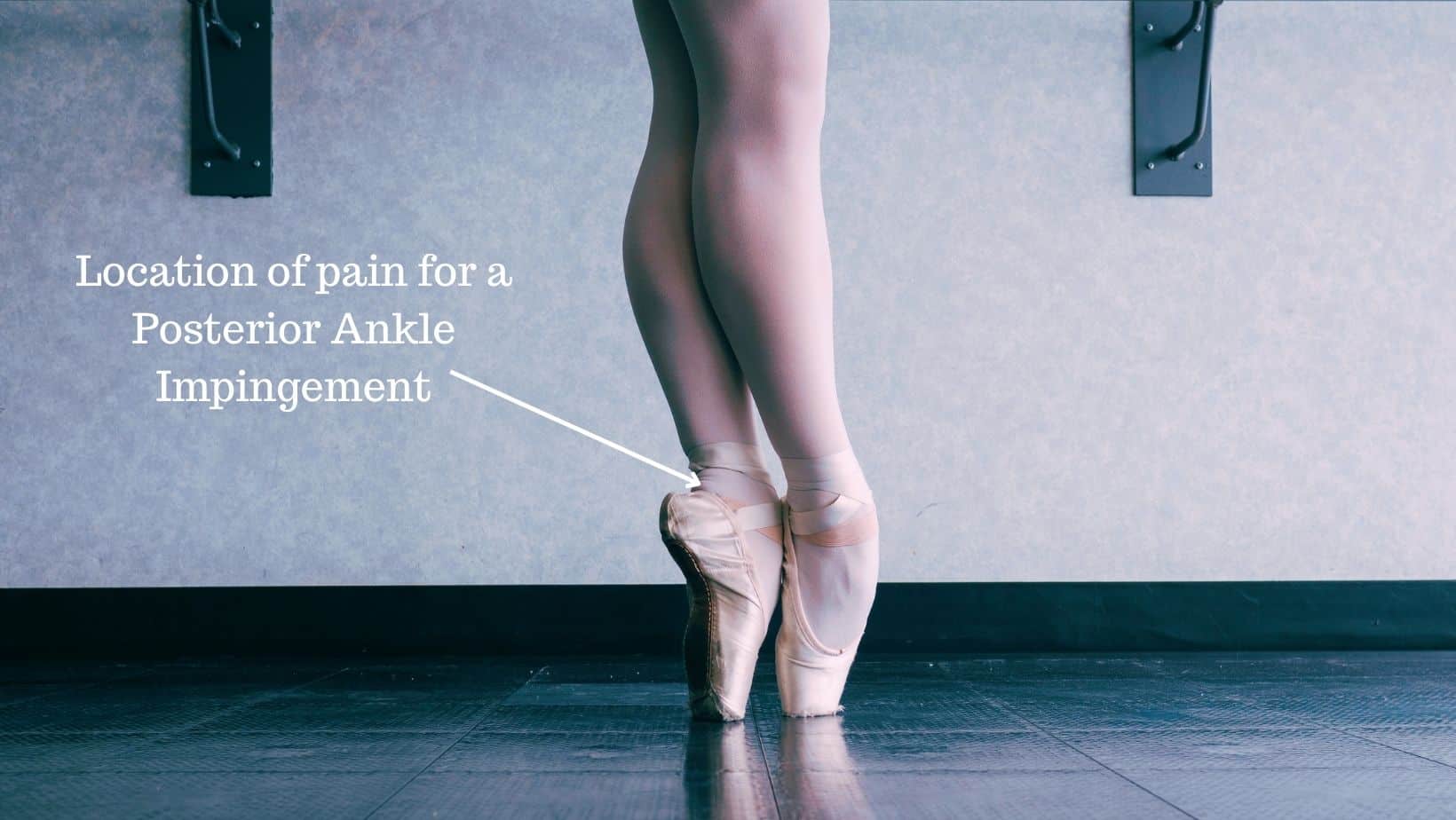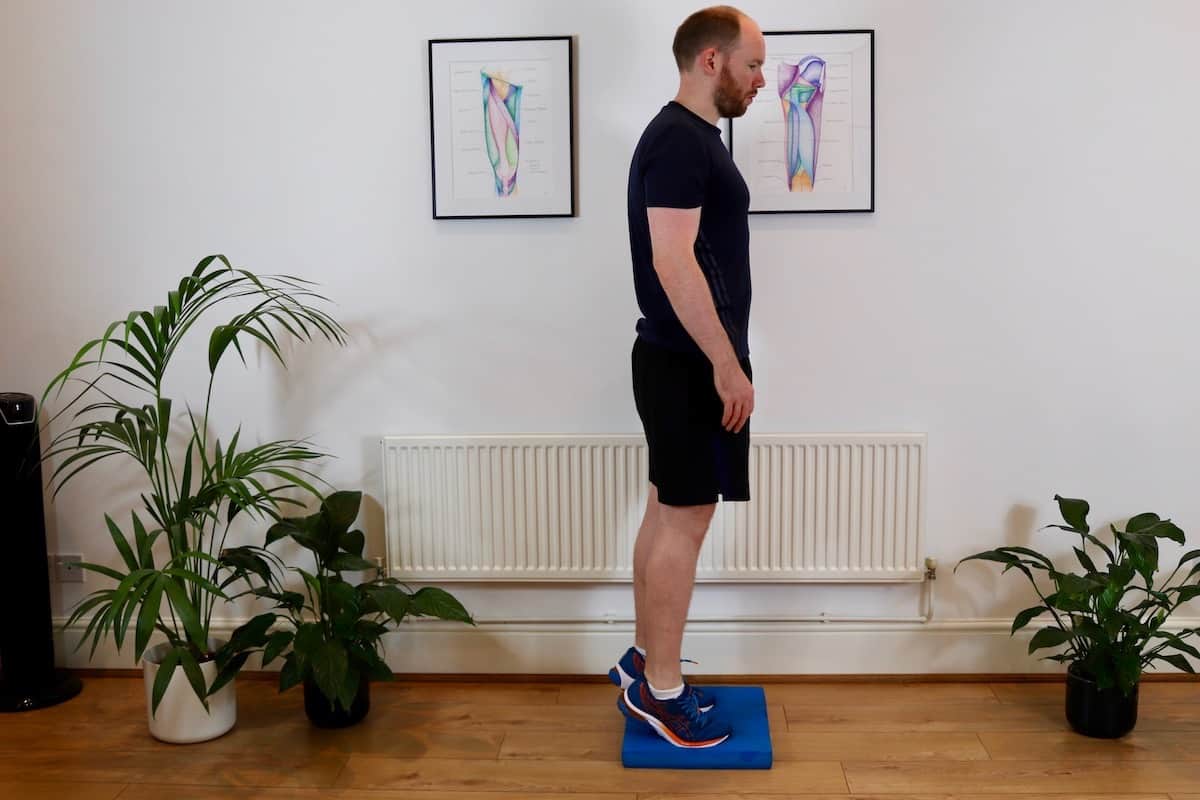Posterior Ankle Impingement Exercises
Read More >
A thorough understanding of the posterior ankle’s anatomy is crucial for diagnosing and treating posterior ankle impingement. The posterior ankle joint consists of 3 bones, the lateral (outer) and medial (inner) malleoli (ankle bones) and the talus bone. Ligaments and tendons connect these three bones, and their function provides stability to the joint.
Some individuals may have an extra bone called an Os Trigonum due to the talus bone not fully unifying through childhood. In other individuals, there may be a small bony growth on the talus bone called a Steida Process. Either of these structures can lead to reduced space at the back of the ankle and contribute to ankle impingement.
Importantly some significant tendons pass through the back of the ankle that can become impinged by bony structures, such as the Flexor Hallucis Longus and the Tibialis Posterior. When this occurs, the tendons become inflamed and painful.
Posterior Ankle Impingement is characterised by irritation or pinching of any of the area’s bony or soft tissue structures. Throughout this article, we will explain their symptoms, the causes and how to treat Posterior Ankle Impingement.

The primary symptoms of Posterior Ankle Impingement are pain and swelling at the back of the ankle during plantarflexion. The pain can feel sharp and intense when the foot is in plantarflexion, and pointing your foot upwards can ease the pain.
Walking downhill, in addition to going on your tiptoes or walking downstairs, can worsen the symptoms of Posterior Ankle impingement as it closes down the back of the ankle.
In our experience of patients with irritable cases of Posterior Ankle Impingement, there may be a low-level dull ache at rest, and it can be tender to touch the back of the ankle.
Wearing high heels is likely to irritate the posterior ankle, and it is a condition that is often misdiagnosed as Achilles Tendonitis.
There are numerous causes of Posterior Ankle Impingement. Bony growth formations called a Stieda Process, or an extra bony formation called an Os Trigonum, can become irritated by repetitive plantarflexion.
Repetitive Trauma to the back of the ankle from kicking a ball, jumping, or going en-pointe can irritate and back of the ankle, causing pain and swelling. In Ballet Dancers, this condition is referred to as Dancer’s Heel.
There are numerous soft tissue structures, such as the Flexor Hallucis Tendon and accessory muscles or loose bodies, that can also lead to posterior ankle impingement.
Posterior Ankle Impingement is commonly seen in:
A clinical examination with a medical professional such as a physical therapist or a sports medicine doctor is necessary to diagnose posterior ankle impingement. The examination typically involves a careful clinical interview followed by a physical assessment to determine if Posterior Ankle Impingement is present.
Forced hyper plantarflexion of the ankle joint, known as the heel trust test, should elicit posterior ankle pain. To perform the test, ask the patient to hang their ankle over the edge of the plinth in a supine position. The clinician should place the heel of their hand on the base of the heel and use the other hand to stabilise the tibia. Thrust the ankle into plantarflexion; if this elicits pain, it is a positive test.
If there is no improvement in the patient’s symptoms after 6 weeks of treatment, then it is sensible to refer a patient for imaging. An X-ray can identify bony changes to the ankle, such as a Steida process or an Os Trigonum. In contrast, an MRI scan as this can identify bone spurs, swelling or irritation of soft tissue structures in the back of the ankle.
Home treatment for this condition requires patients to reduce activities that irritate the symptoms, such as avoiding terminal plantarflexion. In addition, you can apply ice to the back of your ankle for 10-15 minutes, 3-4 times daily. Speak to your GP about taking non-steroidal anti-inflammatories such as ibuprofen to reduce inflammation and optimise this rest period.
Posterior Ankle Impingement treatment with a Physical Therapist is recommended to resolve the condition. Treatment can involve ankle mobilisations, soft tissue massage, and strengthening and stability exercises.
Wear supportive, cushioned trainers with a low heel drop to reduce compression in the posterior ankle while keeping active with short and frequent walks of 30-45 minutes 2-3 times daily.
Taping, custom insoles, and footwear modifications can also help to relieve pain. A gait analysis may be required to address any biomechanical issues.
If symptoms fail to settle with these strategies, you may require an ultrasound-guided steroid injection to reduce pain and swelling in the area.
If conservative management is unsuccessful, surgery may be performed to remove an Os-Trigonum or any bony spurs, such as a Stieda process. This is usually followed by 4-6 weeks of rehabilitation with a Physical Therapist.
Related Article: Posterior Ankle Impingement Exercises

This article is written by James McCormack, a Lower Limb Specialist who is an expert in treating Posterior Ankle Impingement.
This is not medical advice. We recommend a consultation with a medical professional such as James McCormack if you are experiencing any of the symptoms discussed in this article. James offers Online Physiotherapy Appointments weekly and face-to-face appointments in his London clinic.